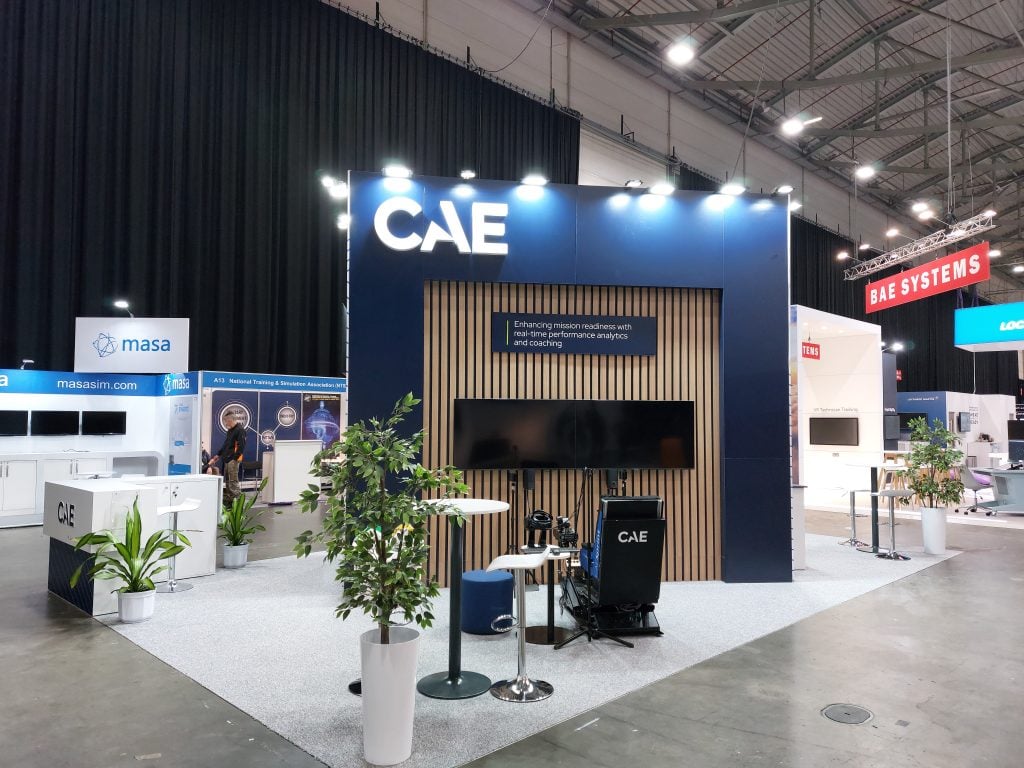
Introduction:
Trade shows serve as a vibrant marketplace where brands converge to showcase their offerings, network with industry peers, and engage with potential customers. However, in the midst of this bustling environment, the challenge for exhibitors lies in designing booths that effectively balance interactivity with information dissemination.
Let’s delve deeper into this pivotal aspect of trade show booth design and explore strategies for striking the perfect balance between captivating interactivity and informative content.
The Importance of Interaction:
In a bustling trade show environment, where competition for attendees’ attention is fierce, the role of interactive elements cannot be overstated. Let’s explore why interaction is crucial and delve into some successful examples of interactive elements that have made an impact in trade show booths:
Drawing Attendees In:
In a sea of competing booths, interactive elements act as powerful magnets, effortlessly drawing attendees towards your exhibit. Consider the allure of a touchscreen display featuring captivating visuals or a motion-activated game enticing passersby to stop and engage. For instance, Company X implemented a virtual reality (VR) simulation at their booth, allowing attendees to experience their product in a unique and immersive way. The interactive nature of the VR experience immediately captured attendees’ attention, making Company X’s booth a focal point of interest on the trade show floor.
Creating Engagement:
Interactive experiences transcend passive observation, inviting attendees to actively participate in the booth’s narrative. Whether it’s a live demonstration of a product’s features or a hands-on workshop showcasing its functionality, interactive elements foster deeper engagement and facilitate meaningful interactions between attendees and booth staff. Company Y incorporated a product customization station into their booth, allowing attendees to personalize their own merchandise. This interactive activity not only encouraged engagement but also sparked conversations about the brand’s offerings, leading to valuable connections and potential leads.
Leaving a Lasting Impression:
The hallmark of successful interactive elements is their ability to leave a lasting impression on attendees’ minds long after the trade show has ended. Memorable interactions evoke positive emotions and create a connection between attendees and the brand. For example, Company Z integrated a photo booth with fun props and social media sharing capabilities into their booth. Attendees enjoyed snapping photos and sharing them online, spreading brand awareness and generating buzz even after the trade show concluded. The interactive photo booth left a memorable impression on attendees, associating Company Z with a fun and engaging experience.
By incorporating interactive elements that draw attendees in, foster engagement, and leave a lasting impression, trade show booths can elevate the overall attendee experience and maximize their impact on brand awareness and lead generation.
The Power of Information:
- Educating the Audience: Informative content provides attendees with valuable insights into the brand’s products, services, and value proposition.
- Establishing Authority: Well Presented information positions the brand as an industry leader, instilling trust and credibility among attendees.
- Facilitating DecisionMaking: Informative displays guide attendees through the decision making process by addressing their pain points and demonstrating how the brand’s offerings can fulfill their needs.
Strategies for Balancing Interactivity and Information:
- Zoned Layouts: Design the booth with distinct zones for interactive experiences and informational displays to cater to different attendee preferences.
- Interactive Product Demonstrations: Showcase products through interactive demos that allow attendees to explore features and benefits firsthand.
- Informational Touchpoints: Install touch screen kiosks or digital displays where attendees can access detailed product specifications, case studies, and testimonials.
- Live Presentations: Host live presentations or demonstrations to engage attendees while delivering informative content in an engaging format.
- Gamified Activities: Incorporate gamification elements into the booth experience, such as quizzes or challenges, to impart key information in an entertaining manner.
- Personalized Engagement: Train booth staff to engage attendees in personalized conversations, providing tailored information based on their interests and needs.
Case Studies:
- Company A: By integrating interactive VR experiences into their booth design, Company A achieved a 30% increase in booth traffic and generated a significant number of qualified leads.
- Company B: Company B struck a balance between interactivity and information dissemination by incorporating interactive product demos and informational touchscreens. This approach resulted in higher attendee engagement and improved brand perception.
Best Practices:
- Audience Understanding: Gain insights into the demographics, preferences, and pain points of your target audience to tailor the booth experience accordingly.
- Quality Focus: Prioritize quality over quantity when designing interactive elements and informational displays to ensure a seamless and impactful experience for attendees.
- Continuous Improvement: Regularly gather feedback from attendees and analyze performance metrics to identify areas for improvement and refine the booth design accordingly.
Conclusion:
Balancing interactivity with information dissemination is a crucial aspect of trade show booth design. By creating engaging interactive experiences while providing valuable informative content, brands can captivate attendees, foster meaningful connections, and ultimately achieve their trade show objectives. As trade shows continue to evolve, mastering this delicate balance will be essential for brands seeking to stand out, make a lasting impression, and drive success in their industry.


 US
US
 EU
EU


